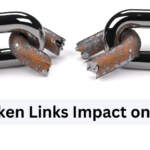Image optimization is an important part of search engine optimization (SEO) and can make a website run much better. By optimising images in the right way, website owners can speed up the time it takes for pages to load, get more people to interact with their sites, and improve their search engine rankings.

The file size is one of the most important parts of optimising an image. Large image files can slow down a website, which can be bad for users and could make search engines rank the site lower. Website owners should use image compression methods like JPEG or PNG to cut down on file size. With these formats, you can reduce the size of a file without losing quality.
Image Optimization in On-Page SEO
A good file name is also an important part of optimising images. Search engines use file names to figure out what an image is about, so it’s important to use descriptive file names with keywords. For instance, a website owner should not use a generic file name like “IMG 1234.jpg.” Instead, they should use a file name like “red-flowers-garden.jpg.”
Alt tags, also called “alternative text,” are another important part of optimising images. Alt tags describe an image with text, which is important for both users and search engines. The alt tag gives a text description of an image when it doesn’t load correctly. Alt tags help search engines figure out what an image is about, which can help the site’s search engine rankings.
There are more ways to optimise images for SEO than just file size, file name, and alt tags. One of the most important things is to use images that are responsive. Images that are responsive change their size and resolution depending on the size of the screen they are being viewed on. This helps make sure that images look great on both desktop and mobile devices, which is important for both users and search engines.
Using structured data is also an important part of optimising images. Structured data is a standard way to tell search engines what an image is all about. This information can include the image’s title, who took the picture, and who owns the rights to it. By using structured data, site owners can help search engines figure out what an image is about, which can help the site rank higher in search results.
In conclusion, image optimization is an important part of SEO that can make a website run much better. By optimising images in the right way, website owners can speed up the time it takes for pages to load, get more people to interact with their sites, and improve their search engine rankings. The key to optimising images is a combination of reducing file size, using descriptive file names, adding alt tags, using responsive images, and using structured data. By following these best practises, website owners can make sure that their images are fully optimised for SEO and that they are getting the most out of their website.





GIPHY App Key not set. Please check settings